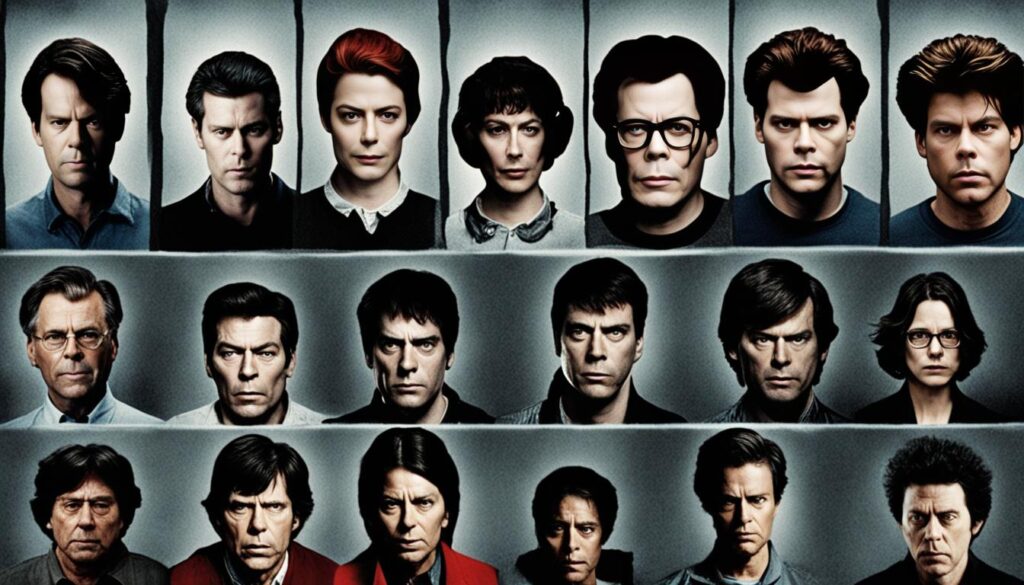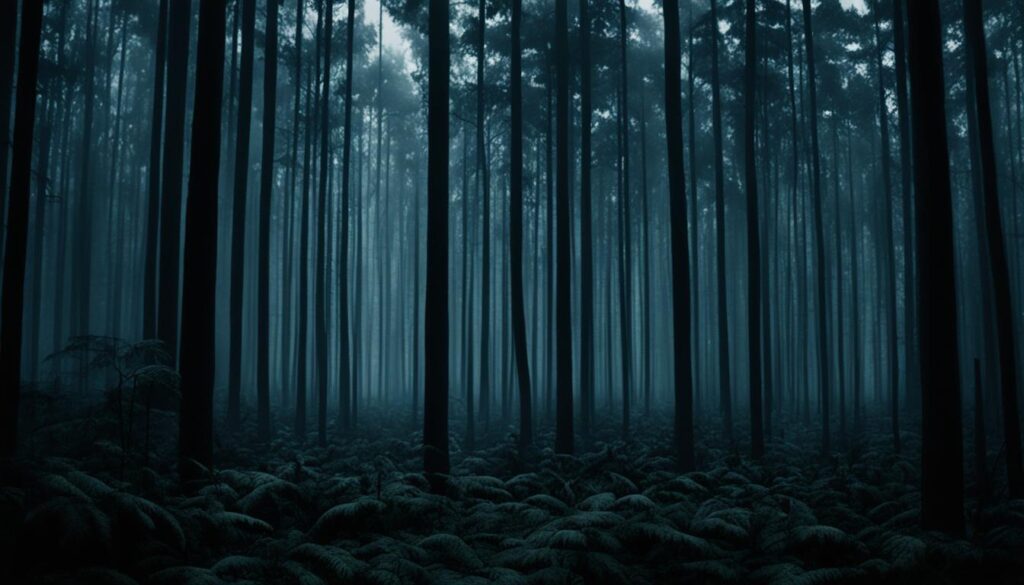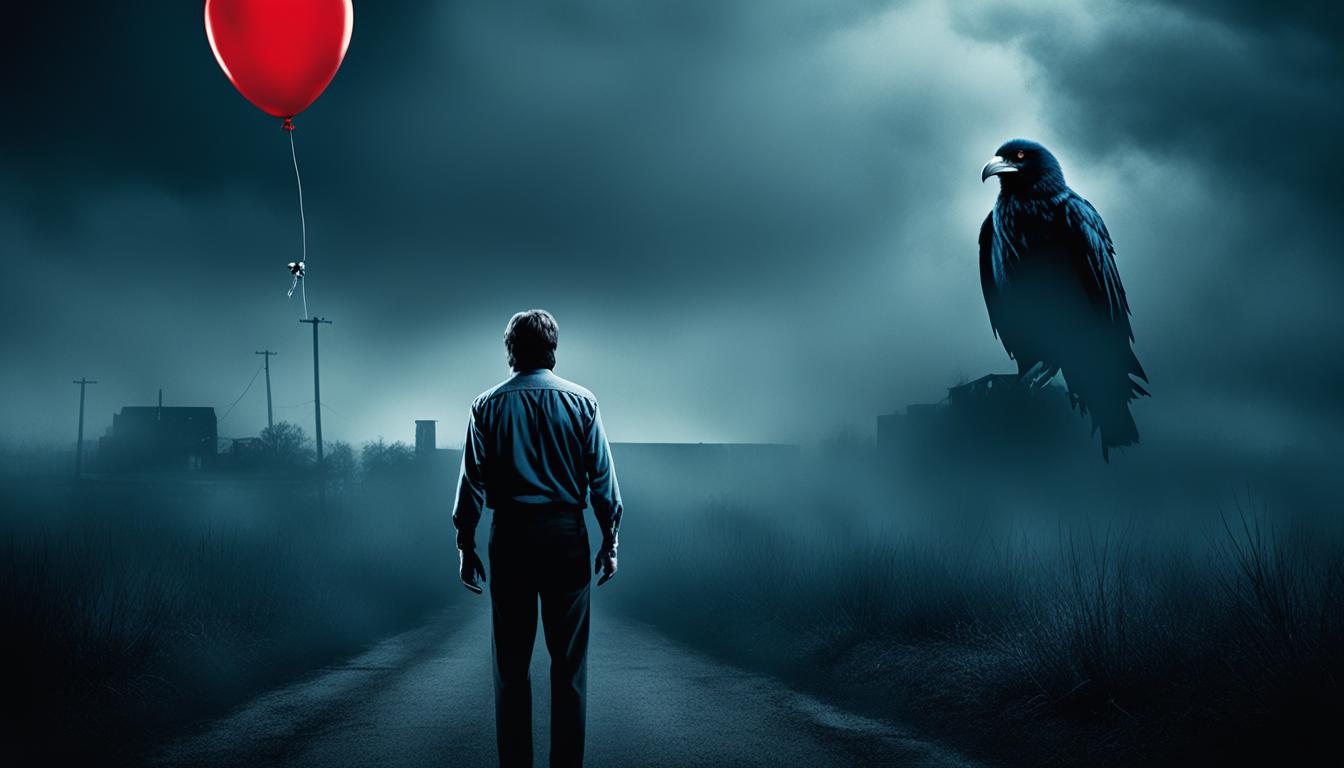Looking for a unique horror film experience? “You Can’t Kill Stephen King” may be just what you need. This darkly comedic world offers a fresh take on the genre, and in this section, we’ll provide an in-depth review and insights into this thrilling movie. Join us as we explore the plot, characters, visuals, and themes of “You Can’t Kill Stephen King.” Get ready for a journey into a world where horror and comedy collide.
Introduction to “You Can’t Kill Stephen King”
Released in 2012, “You Can’t Kill Stephen King” is a horror-comedy movie that explores the genre in a unique way. The film centers around a group of friends who travel to Maine on a literary pilgrimage to honor Stephen King, but they soon find themselves in a dangerous situation.
The movie received mixed reception upon its release, with some praising its dark humor and others finding it lacking in scares. However, it offers a refreshing take on the horror genre that will entertain viewers who are looking for something different.
The premise of “You Can’t Kill Stephen King” is intriguing, blending humor and horror in a way that is both entertaining and disturbing. The movie may not be for everyone, but for those looking for a unique horror experience, it is definitely worth a watch.
Plot Analysis and Synopsis
As promised, we will delve into a comprehensive analysis of the plot of “You Can’t Kill Stephen King” and provide a synopsis of the story. The movie follows a group of friends who travel to Maine to visit the town where their favorite horror author, Stephen King, resides. However, their visit soon takes a dark turn when they become the target of a serial killer who seems to have taken inspiration from King’s novels.
The Synopsis
The film begins with the introduction of a group of friends, each with their own quirky personalities. They decide to take a trip to Maine to visit Stephen King’s hometown and hopefully catch a glimpse of the author himself. Upon their arrival, they quickly realize that their trip may not be exactly what they had planned.
As they settle into their accommodations, they are targeted by a mysterious killer who seems to be modeling their murders after King’s novels. The group must band together to not only survive but to solve the mystery and catch the killer before it’s too late.
The plot of “You Can’t Kill Stephen King” twists and turns, keeping viewers on the edge of their seats until the very end. With unexpected plot developments and thrilling action scenes, it is no wonder that this movie has gained a following.
Key Elements
One of the key elements of the plot is the way in which the characters themselves become a part of the story. Their obsession with King’s novels and their drive to solve the mystery make for an engaging and immersive experience.
Another notable aspect of the plot is the darkly comedic tone and the way in which it balances horror and humor. While the murders themselves are gruesome and unsettling, the film also features plenty of jokes and lighthearted moments to balance out the tension.
Overall, the plot of “You Can’t Kill Stephen King” is a clever and engaging twist on the horror genre, blending elements of comedy and mystery to create a unique viewing experience.
Character Development and Performances
In “You Can’t Kill Stephen King”, the character development and performances play an essential role in shaping the film’s narrative and overall impact. The ensemble cast brings a unique blend of humor, horror, and suspense to their roles, making for an engaging viewing experience.
The lead characters, Monroe (Justin Brown) and Barbara (Kate Costello), stand out with their distinct personalities and character arcs. Monroe, a self-professed horror movie buff, brings his expertise to the forefront as he and Barbara navigate the film’s horror elements. Costello impresses with her portrayal of a sarcastic and confident writer trying to uncover the truth about Stephen King’s disappearance.
The supporting cast delivers solid performances, particularly Ron (Harry Aspinwall) and Salman (Kayle Blogna). Aspinwall’s comedic timing and Blogna’s deadpan humor complement each other, adding a unique layer of humor to the film.
The cast’s performances make the most of the darkly comedic world. However, some viewers may find the humor outweighs the horror, potentially toning down the tension and suspense in some scenes.
Table 4: Character performances in “You Can’t Kill Stephen King”
| Character | Actor/Actress | Performance |
|---|---|---|
| Monroe | Justin Brown | The character shows growth and depth throughout the film. Brown’s performance brings to life Monroe’s passion for horror movies. |
| Barbara | Kate Costello | Costello skillfully portrays Barbara’s assertiveness and wit as she attempts to uncover the truth behind Stephen King’s disappearance. |
| Ron | Harry Aspinwall | Aspinwall’s comedic timing provides a sense of levity throughout the film, adding to the comedic tone. |
| Salman | Kayle Blogna | Blogna’s deadpan humor nicely contrasts with Aspinwall’s comedic delivery, contributing to the film’s overall humor. |
In conclusion, the performances and character development in “You Can’t Kill Stephen King” add depth to the unique blend of horror and comedy. While the humor may overshadow the horror, the performances are still a standout feature of the film.

Visuals and Cinematography
In “You Can’t Kill Stephen King,” the visual elements play a crucial role in creating the movie’s eerie and unsettling atmosphere. The cinematography, set designs, and overall visual aesthetic work together to provide a unique viewing experience. The use of various camera angles and shots enhances the film’s suspense and tension, keeping viewers on the edge of their seats.
The movie’s color palette is cool and muted, creating a sense of desolation and melancholy. The sets are designed to reflect the isolated and abandoned nature of the movie’s setting, Stephen King’s hometown of Maine. The use of lighting is also critical, with certain scenes relying on dim or flickering lights to heighten the tension.
The Cemetery Scene
One standout scene that showcases the film’s excellent visuals and cinematography is the cemetery scene. The camera angles and set design make for an eerie and frightening atmosphere, with fog rolling in and distorted shadows elongating across the screen. The colors used in this scene are cold and blue, adding to the creepy vibe.
| Element | Description |
|---|---|
| Camera angles | Low angles are used to depict the graves and the characters walking among them, highlighting their vulnerability and the imposing nature of the setting. |
| Set design | The cemetery is surrounded by dense woods, adding to the sense of isolation and desolation. |
| Lighting | The fog and dim lighting create an ominous and spooky ambiance, making the scene all the more unsettling. |
The cemetery scene is just one example of how “You Can’t Kill Stephen King” uses excellent visuals and cinematography to create a unique and engaging viewing experience.
The Comedy-Horror Blend
Not many movies can successfully blend two opposing genres, but “You Can’t Kill Stephen King” manages to merge comedy and horror elements together, offering a truly unique viewing experience. The film’s smart writing and execution allow for a harmonious balance between the two genres, creating a darkly comedic world of terror.
The comedy in the movie is often used as a tool to diffuse tense moments, provide tongue-in-cheek references to other horror movies, and to lighten the mood of what would otherwise be an intense viewing experience. The film’s hilarity never undermines the horror, as the balance between the two genres remains intact, resulting in a powerfully engaging cinematic experience.
The movie’s standout feature is the dark humor that permeates throughout the story. The humor is often conveyed through absurd situations, clever dialogue, and hilarious character interactions. The visuals also incorporate a certain comedic touch that brings the film’s humor to life.
Overall, “You Can’t Kill Stephen King” proves that comedy and horror are the perfect match when balanced with care. The film’s unique blend of humor and horror is a testament to its clever writing and deft execution, making it a must-watch for fans of the two genres.
Themes and Messages Explored
While “You Can’t Kill Stephen King” is primarily a horror-comedy film, it also explores several thought-provoking themes and messages.
Psychological exploration
Throughout the movie, the characters grapple with their own fears and anxieties, providing a glimpse into the human psyche. The film portrays how people cope with their inner demons, and how easy it is for them to become consumed by their own thoughts and beliefs.
Social commentary
“You Can’t Kill Stephen King” also offers a darkly comedic commentary on society, emphasizing how entertainment and fame can turn into obsessive addiction. Following the characters’ attempts to kill Stephen King, the movie seems to argue that people are becoming increasingly desensitized to violence and gore, and that our fascination with celebrities is reaching unhealthy levels.
Importance of friendship and teamwork
The friendship between the main characters is one of the driving forces of the plot. Despite their differences, they band together to achieve a common goal. “You Can’t Kill Stephen King” highlights the importance of teamwork, portraying how it can help us overcome challenges and achieve success.

Audience Reception and Critical Reviews
Since its release, “You Can’t Kill Stephen King” has received mixed reviews from critics and audiences alike. While some praised the film’s unique blend of comedy and horror, others found it too disjointed or confusing.
On Rotten Tomatoes, the movie has a 33% approval rating, with critics describing it as “sloppy” and “aimless.” Meanwhile, audience reception on the same website has been slightly higher, with a score of 56%. Some viewers enjoyed the film’s humor and nods to Stephen King’s work, while others found it lacking in scares.
Despite these mixed reviews, there are some notable critiques worth highlighting. Brian Collins from Birth.Movies.Death states, “It’s messy, but the ambition and unique tone make it an interesting watch.” Meanwhile, Michael Klug from Horrorfreak News praises the film for being “darkly funny” and “a great addition to the horror-comedy genre.”
Overall, “You Can’t Kill Stephen King” may not be for everyone, but it offers a unique take on the horror genre that is worth checking out for fans of dark humor and Stephen King’s work.
Comparisons to Stephen King’s Works
As the title of the movie suggests, “You Can’t Kill Stephen King” pays homage to the legendary author, but how does it compare to his works? While the film shares King’s signature blend of horror and humor, some critics have noted that it falls short of the master’s storytelling prowess.
One particular area of comparison is the portrayal of characters, which is a hallmark of King’s works. In “You Can’t Kill Stephen King,” the characters are interesting but not as fully realized as in King’s novels.
Another significant point of comparison is the themes addressed in both the movie and King’s works. “You Can’t Kill Stephen King” explores the idea of obsession and the power of storytelling, similar to works like “Misery” and “The Dark Half.”
Despite the comparisons, it’s important to note that “You Can’t Kill Stephen King” offers its unique take on the horror genre, emphasizing a darkly comedic world that’s different from King’s usually bleak and gritty settings.
Conclusion
In conclusion, “You Can’t Kill Stephen King” offers a refreshing take on the horror-comedy genre. With its unique blend of humor and horror, the movie provides an entertaining and thought-provoking experience. Our analysis of the plot, characters, visuals, and themes gives readers a comprehensive understanding of the movie’s strengths and weaknesses.
As we’ve seen, “You Can’t Kill Stephen King” tackles social commentary and psychological aspects in an intriguing way. Whether you’re a die-hard Stephen King fan or simply looking for an original horror-comedy, this movie is definitely worth a watch.



